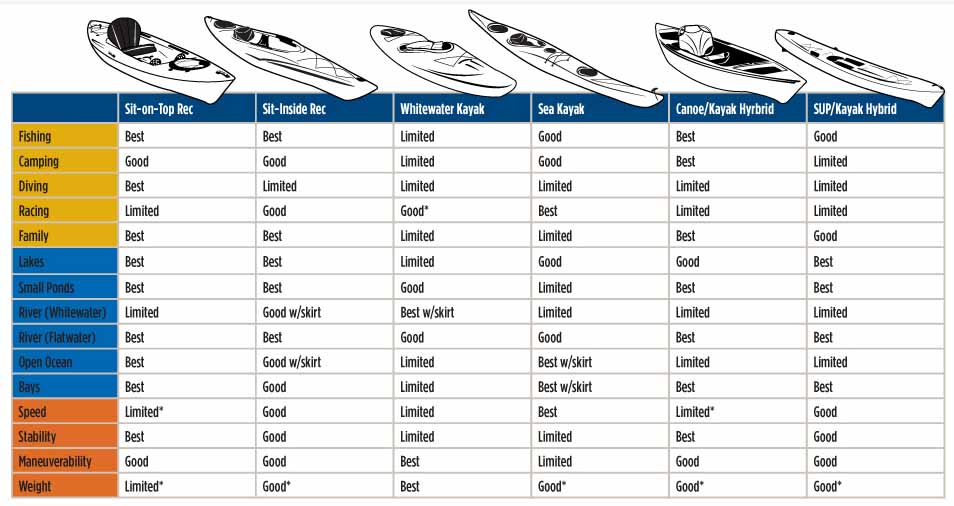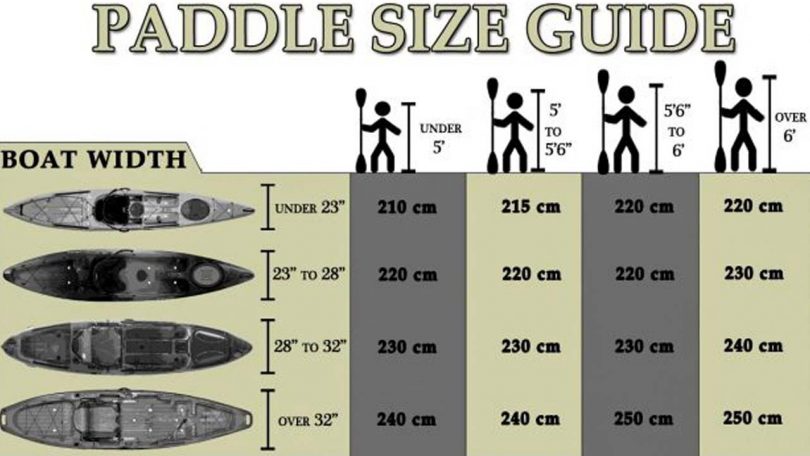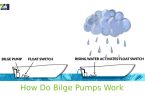Without a paddle, your kayak is no better than a sitting duck awaiting the aggression of a shooter. Every move of your kayak gets its strength from the energy created by the paddle through your actions. What if you’ve got a wrong paddle size that you can barely handle or use to your advantage? That’s frustrating, isn’t that? So, I’m guiding you to help with the right kayak paddle size in this article.
Some internationally recognized standards also affect the choice of kayak paddles when it comes to size. These regulations are familiar to professionals and some avid riders and hobbyists. How much do you know about them? Let’s check out.
Table of Contents
Why Is the Size Important?
The different types of kayak paddles differ in shape, size, and material. Kayak paddle size is an essential factor when choosing a paddle. Generally, longer paddles are more suitable for tall people and large kayaks. Shorter paddles are ideal for shorter users and narrower kayaks.
Selecting any size will make your paddling job very hard. The reasons are many. The paddle size affects the strokes and leads to an improper angle, as well as banged knuckles. Also, you will need to use more energy to paddle.
Therefore, you should learn more about the right paddle size before making your purchase. You can consult a professional or learn the basics yourself. In this article, we will talk about the sizing procedure and becoming able to choose the right size of a kayak paddle.
Paddle Sizing Guide for Kayaks: A Comprehensive Guide
There are many factors to keep in mind before choosing the paddle size. Those kayak paddle sizing factors include:
- Kayaking destinations
- Type of the paddle
- Kayak design
- Your physical shape and size
- Your desired stroke angle
As you’re wondering what size paddle for kayak you need, I suggest that the paddle should be long enough for you to get it into the water with you being in the upright position. The paddle length depends on many factors, as explained above. Therefore, the answer to the “How long should a kayak paddle be?” question is not simple. Let’s consider each factor separately.
Choosing the Right Kayak Paddle Size

Kayak paddle size should be chosen very carefully. Namely, you should consider some factors, with a focus on the water type/environment, your body structure, and the type of your kayak. Let’s learn more about how to determine kayak paddle length.
1. Where Will You Be Kayaking?
Here, we will consider the whitewater kayaking requirements, and the lakes and rivers. Let’s start with whitewater kayaking paddle size.
First of all, you need a blade that slices or attacks the water. This type of paddle is known as the whitewater paddle. You can assume that they are more durable and efficient than the regular paddles. They’re usually made from fiberglass or carbon that offers the kayak great strength. Thus, the kayaks withstand the rough whitewater kayaking conditions.
Secondly, lakes and rivers require a different types of paddles known as the touring kayak paddles. They are perfect for kayaking and fishing, short trips, as well as an exploration of the location. Also, choose wider blades for places with gravel and rocks.
2. The Design of Your Boat
As you’re learning how to size a kayak paddle, you should consider the size, type, and overall design of your kayak. These are the factors that significantly affect the choice of paddles:
- Boat width
- Seat height
- Shaft length
Kayaks with higher seat position demand long paddles. Also, the wider the boat, the longer the paddle! Why? Simply put, you won’t be able to reach the water with a short paddle. Also, if your kayak has a long shaft, you should pick a longer paddle as well. If you are kayaking in a tandem kayak, you should also choose longer paddles.
3. Your Body Structure
Body structure and strength of the kayaker are also essential for canoeing and kayaking. Besides, your paddling style profoundly affects the choice of paddles when it comes to size. Namely, these are the factors related to your body structure you should consider:
- Height
- Torso length
- Physical strength and paddling style
If you want to know how to measure kayak paddles and to choose the one that suits you, you should not forget that tall kayak users need longer paddles. Moreover, it is essential to figure out your length and where it covers much between your legs and torso. You should refer to the paddle size charts and check not only the total height but the torso height as well. This is important as you make the moves and strokes by using your torso.
Your strength is also critical. It directly affects your paddling style, the way you hold and move the paddles, and control the kayak itself. We will talk more about paddling techniques in the following section.
4. Which Stroke Angle Do You Prefer?
Long story short, remember this quick and simple rule: if you are used top addling more vertically, you should pick a shorter paddle. If you prefer more horizontal strokes, choose a longer paddle. Why? These rules refer to the hydrodynamics of the paddle and the efficiency of your moves.
Also, if you make higher strokes that are close to the side of the boat, you should pick a shorter paddle. On the other hand, if you make lower strokes, casual touring and generally an acute angle concerning the surface, you should choose a somewhat longer kayak paddle.
Still Not Sure About the Size? Read This
If you are still not sure about the paddle size that will suit your needs the best, read more about the following two techniques:
- On-water method
- On-shore method
1. Put It into the Real-Life Use
Let’s show you how to do the on-water method to determine the paddle size. We want you to pay special attention to this method, as experts say that this is method No. 1 when it comes to determining the paddle size.
- Try different paddles
- Enter the kayak (on the water)
- Sit in an upright position
- Position your torso and hands
- Try the paddles one by one and rely on the trial and error method
- Choose the best paddle according to the speed, maneuverability, and control over the kayak
2. Follow This Quick Way
If you are not so keen on the trial and error method, or the on-water method we had described previously, try one of the on-shore methods.
First of all, you should place your arms outwards, with your elbows positioned at right angles. Hold the paddle as usual. If the position of yourhandsreaches2/3 of the distance from the shaft center to the blade shoulder, you’ve got the right paddle size.
The second method implies placing the paddle in the upright position next to your body (you are standing). Fully extend your arm upwards and place the joint of your finger over the tip of the paddle. If your finger can reach around the top of the paddle, you don’t have the right size. Also, if the tips of your fingers are far from the tip of the paddle, you should get a longer one.
Conclusion
Kayak paddle size is significant for a successful kayaking experience. It allows easier moves, better control over your favorite kayak, and safety in demanding environments. Moreover, it saves your energy and helps you efficiently use your techniques.
We strongly recommend learning more about picking the right size of the kayak paddle before making your purchase. Test different paddles on-shore and on-water, if you have a chance. Then, decide on the best choice according to the type of your kayak, your body features, as well as the location and type of water you will be kayaking on.








Leave a Comment